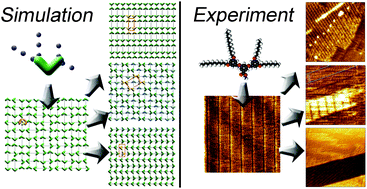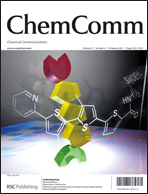Predicting the influence of a p2-symmetric substrate on molecular self-organization with an interaction-site model†
Abstract
An interaction-site model can a priori predict molecular self-organisation on a new substrate in Monte Carlo simulations. This is experimentally confirmed with


 Please wait while we load your content...
Please wait while we load your content...